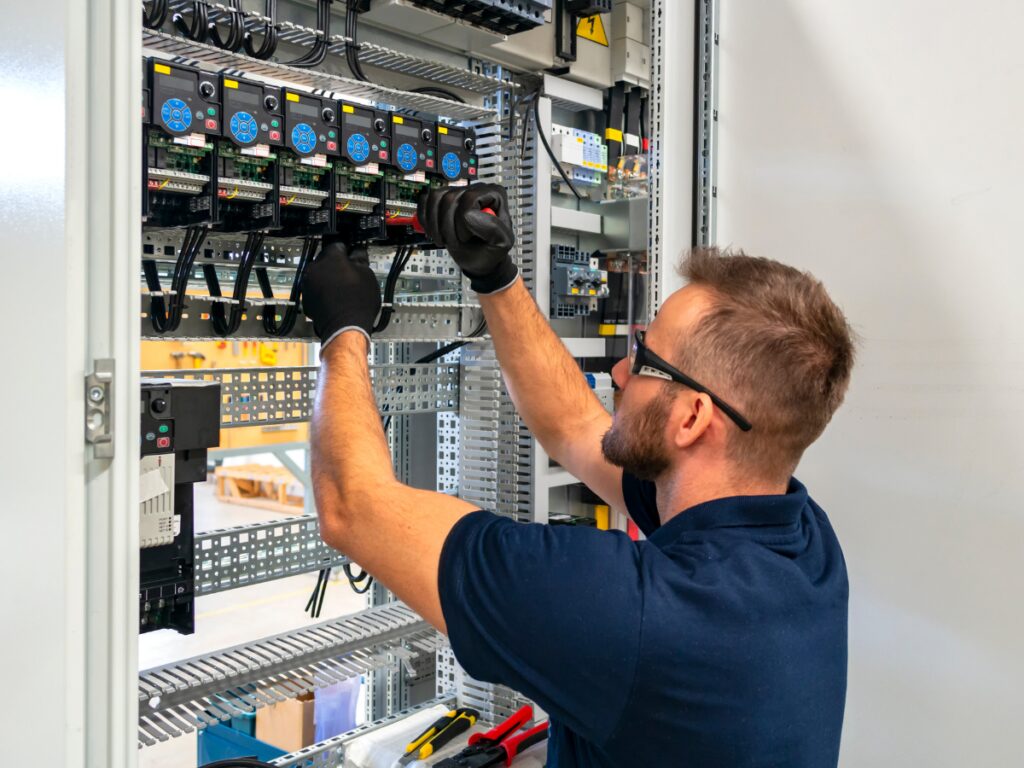Old electrical panels and circuits are some of the most neglected aspects of a home or business property, but they have far-reaching consequences for safety and costs. With increasingly power-intensive appliances and systems, older electrical systems tend to fall short. Panels constructed decades ago were never intended to provide the capabilities required by today’s smart homes, HVAC systems, and high-wattage devices. It is important for property owners to understand how aging panels and circuits contribute to increasing service bills so that they can protect their investments and prevent costly electrical repairs in Roanoke, VA.
- Low Load Capacity Means Frequent Circuit Overloads
Older panels accommodate lower amperage loads, usually limited to 60 or 100 amps, while contemporary homes might need 200 amps or higher. Consequently, these systems are overloaded when operating several appliances at once. The repeated tripping of circuit breakers is not only frustrating but also indicative of severe wiring stress. Gradually, this repetitive overload strains circuit function and requires constant service calls to identify burnt circuit breakers or compromised wiring. If not treated by overcoming the root cause restrictions, repair expenses skyrocket.
- Aging Wiring Materials Deteriorate and Pose Fire Risks
Most older circuits are constructed with aluminum or cloth-covered wire, which will deteriorate with age. The materials become brittle or oxidized, providing more opportunities for sparks and short circuits. When these circuits are enclosed in walls, fire dangers become much higher since homeowners cannot realize the threat until it happens. Repair or replacement of wire after a hazard has developed is considerably more expensive than proactive renovations. The availability of outdated wiring infrastructure typically calls for a complete examination and a lot of rewiring repairs to meet current safety requirements.
- Outdated Panels Do Not Have Safety Features of Contemporary Systems
Most old panels do not have vital safety functions such as arc fault circuit interrupters (AFCIs) or ground fault circuit interrupters (GFCIs). These features are common in contemporary systems to avoid electrocution and electrical fires. Without them, even small problems are likely to turn into costly breakdowns, ruining appliances or even property. Responding technicians end up having to retrofit safety features at a high price. A new panel upgrade becomes a necessity, not an option, when compared to the possible outcomes.
- Insurance and Inspection Failures Lead to Unplanned Expenses
Old electrical panels, particularly manufacturers with reputations for defects, can result in failed home inspections and denied insurance claims. Houses with old systems, such as fuse boxes or reputation-damaged panels, are frequently identified by inspectors or insurers. Not only does this slow real estate transactions, but it may necessitate eleventh-hour overhauls to comply with policy. The haste of these upgrades leads to increased labor rates and scarce contractor availability. Keeping ahead of these problems through prompt replacement prevents hasty and costly repairs in the future.
- Cumulative Repairs Accumulate Without Solving Underlying Problems
Homeowners tend to use band-aid methods to repair recurring electrical failures, thinking it’s a cost-effective measure. But when the underlying issue is an old panel or deteriorated circuit, these stopgap measures are short-lived. Replacing individual breakers or rewiring sections repeatedly results in increasing costs without providing long-term peace of mind. Over the long term, upgrading the electrical system eliminates the need for repeated service calls and provides improved overall system reliability. Investing in a new infrastructure ultimately saves total costs and interruptions.
Aged panels and circuits might appear to be a subtle hassle, but their effect reveals itself in rising repair bills, higher safety hazards, and reduced performance. Ignoring the symptoms or taking short-term measures only escalates the issue, usually at the worst time. Updating your electrical system isn’t about staying current with technology. It’s about safeguarding your property and avoiding financial losses. With a sound electrical system, your home or business can run more smoothly and safely without the specter of emergency repairs hanging over your head.
Protect your property from electrical hazards with Cline Electrical Service. Their trusted electrician in Cave Spring, VA, ensures safe, modern upgrades. Call 540-380-3886 now for expert service and peace of mind.
FAQs
- What are the signs of an old electrical panel?
Signs include repeated breaker tripping, dimming lights, burning smells, warm panels, or visible rust. If your panel has not been checked in more than a decade, it probably needs to be looked at.
- How frequently should electrical systems be inspected?
Most professionals suggest a complete electrical inspection every 3–5 years on older homes, or during major renovations, to keep everything safe and up to code.





























